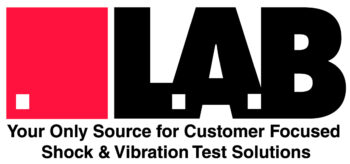Product Fragility Analysis Made Easy
The Damage Boundary method of product fragility analysis has been around since the late 1960s and has proven itself to be an outstanding tool for reliability analysis, protective package design, and product fragility analysis. Yet it is not widely used in any of the areas where it can create a positive input. There are many possible reasons identified for this in the text. Possible different approaches and recommendations for procedure modifications are given in order to improve the effectiveness of product shock and vibration fragility assessment. Compliments of WESTPAK Inc.
Laboratory Package Drop Testing
Numerous field studies conducted by many parties, including WESTPAK, Inc., have shown that the probability of a “design drop height” event during distribution is very small, on the order of 5% or less during any particular shipment. Yet the majority of laboratory package drop test procedures typically call for 10 impacts from the design drop height on different faces, edges, or corners of the package system. Does this not constitute a substantial over-test? This paper will examine the nature of package drop testing, why it evolved in its current format, and the significance on package performance and optimization. Compliments of WESTPAK Inc.
ASTM D4169 Assurance Level Determination
If you have ever grappled with which testing Assurance Level to use, you are not alone. All products need some amount of protection throughout the distribution environment. An implantable medical device has different critical components and protection needs than a pillow. Package design and testing validation recognizes these differences, taking into consideration the product end use, necessary safety margins and your risk tolerance. Product protection is vital and knowing your distribution environment and what exactly you are protecting against is equally important. Without knowing these elements, over-packaging, leading to financial and environmental waste, is likely. To assist in designing the optimal package, ASTM D4169 offers varying Assurance Levels (AL) within the package testing sequence to simulate a variety of distribution scenarios and probabilities. Compliments of WESTPAK Inc.
Why "Shipping Tests" Don't Work
“Shipping tests” or “trial shipments” are often used to determine if a product/package system will survive the distribution environment without damage to the product. The reality is that a single shipping test is statistically insignificant; utilizing this approach will often lead to incorrect conclusions unless further testing is conducted. This paper will explore the reasons for this while recommending a much more feasible approach to evaluating product/package systems. Compliments of WESTPAK Inc.
Top 3 Failure Modes During Distribution Testing
The best way to avoid a possible recall due to product damage during distribution is to subject your packaged product to a series of distribution tests, often referred to as package performance testing. We offer a brief primer on the topic and list the Top 3 Failure Modes During Distribution Testing encountered at WESTPAK’s accredited test laboratories. Compliments of WESTPAK Inc.
Factors to Consider When Selecting an LAB HV System
Over the past 80+ years, LAB has been very skilled in the design and manufacturing of mechanical vibration systems and many Electro-Mechanical Vibration Systems. Electro-Mechanical are commonly referred to as Hydraulic Vibration Systems. For this discussion, we are going to talk about LAB Hydraulic Vibration (HV) Systems.
In order to size a system properly, many relationships of the system have to be looked at and calculated. Some the relationships are linear and some nonlinear. Almost all of the variables that have to be considered when selecting the right system are dependent upon each other and cannot be decided upon without considering other components and parameters of operation.
PSD and SRS in Simple Terms
Power Spectral Density (PSD) and Shock Response Spectrum (SRS) analyses have been used in packaging laboratories for a number of years, but often with limited understanding of the underlying concepts. This paper will attempt to explain those concepts in terms which make sense to packaging professionals, with discussions of proper and useful application.
Vibration Data Collection: A Road Worth Travelling?
There’s been a great deal of interest and activity in the last decade or so focused on measurement of the distribution vibration environment. This activity has largely been made possible by the availability of portable digital data instruments which can accurately record field information and present it in useful formats. A number of significant studies have been undertaken and reported, covering major modes of transport and wide geographical areas…
Validation and Comparison of Time and SRS Shock Data
Often a customer, OEM or contract testing house inquires as to “How can I use SRS and what analysis system is best to use?” As a marketer and producer of shock testing equipment, but not data analysis software, we are at somewhat of disadvantage in providing them with the best solution. This effort will help LAB, its potential and existing customers seek an answer to this question.
SHOCK, DROP, and IMPACT Testing Equivalence
ISTA, ASTM, and other test procedures often permit alternative ways of performing shock and impact tests. The various methods include free-fall drop, rotational drop, shock test machine, inclined-impact, and horizontal impact. This paper will examine the similarities and differences between these approaches, and the conditions under which they are and are not equivalent.
Fatigue Damage Boundary - Background, Status Report, and Call for Help
The Damage Boundary (DB) approach to assessing product shock fragility has been around for over 30 years1. Briefly stated, it is a method of determining what shock pulses will damage a product, and what shock pulses will not. The traditional Damage Boundary plot (Figure 1), with axes of Peak Acceleration and Velocity Change, shows the areas (and therefore the pulses) of “damage” and “no damage”.
Vibration Testing Equivalence- How many hours of testing equals how many miles of transport?
The question is often asked – how many hours equals how many miles? But there are numerous kinds of vibration tests, and numerous kinds of transport. This paper examines several existing recommendations, discusses the various factors, explores different approaches involving frequency-domain and time-history testing, then proposes a methodology which might lead to improved simulations.- William I. Kipp
W. I. Kipp Company LLC*

